Mug styles & shapes - a range of mugs for printing
A range of quality stoneware, porcelain and bone china mugs and cups & saucers for printing & decoration. Quote the letter code, or take a screenshot of your mug preference then email it to us with your enquiry. Note that cylindrical mugs are best for full handle to handle wraparound prints.
email enquiry: click the orange button below
or phone +44 (0) 7970 060124
PORCELAIN MUGS
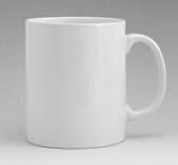
CMB white
height: 89mm
top dia: 80mm
capacity: 260ml

BONE CHINA CUPS & SAUCERS FOR COFFEE & TEA


C&S STR white
cup height: 60mm
top dia: 85mm
capacity: 230ml
C&S CPO 1 white
cup height: 60mm
top dia: 110mm
capacity: 290ml
C&S CPO 2 white
cup height: 55mm
top dia: 114mm
capacity: 310ml
saucer dia. 155mm
BONE CHINA MUGS
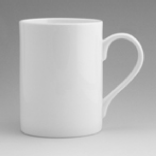

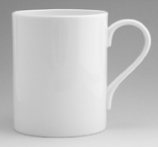

LYC white only
height: 97mm
top dia: 75mm
capacity: 350ml
CC white only
height: 89mm
top dia: 80mm
capacity: 380ml
CHKY white only
height: 97mm
top dia: 86mm
capacity: 400ml
BML white only
height: 85mm
top dia: 75mm
capacity: 260ml
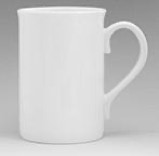
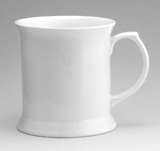
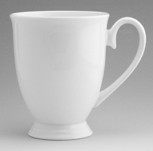
WDR white only
height: 85mm
top dia: 75mm
capacity: 260ml
BCTKD white only
height: 84mm
top dia: 80mm
capacity: 250ml
MQE white only
height: 105mm
top dia: 85mm
capacity: 300ml
Mug print area guides
If you are preparing your own designs and need the print area guides in order to size your artwork, click the above buttons to download the print area for the appropriate mug you would like to be printed.
These print area guides are only suitable for cylindrical mugs.
The .pdf files also contain the circle area for the back stamp.
PRINTING ON YOUR SUPPLIED CERAMICS
We are sometimes able to print on customer’s supplied ceramics. Vitrified ceramics (meaning high fired, glassy & non water absorbent) such as bone china, porcelain and stoneware are OK to use. Earthenware (which is porous clay body beneath the glaze) is generally not suitable, particularly if it has been around for some time. Over time the porous earthenware clay body absorbs ambient moisture from the air which causes “frizzle” on the glaze surface as it melts and the steam escapes when it is fired to 720˚C in a kiln.
It is best to have a few samples to test fire for before production.
